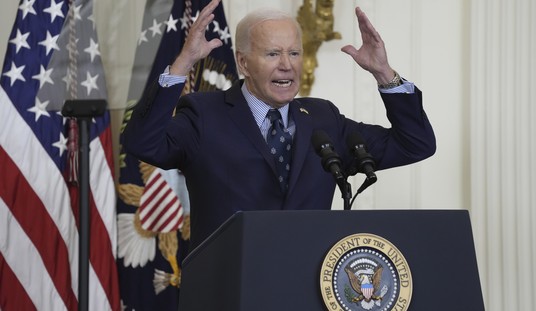In the face of a stagnating economic activity many economists are trying to explain why the medicine they have been administering these last six years isn’t working. Not capable of accepting theoretical defeat they offer new explanations. The “new” normal is in the process of being explained by nuance con gusto.
We are being told that technology has permitted big corporations to replace manufacturing jobs with either cheap foreign labor (thanks to the global logistics revolution) or the substitution of capital for labor using robotic technology. But, an even grander reason is on offer by Robert Gordon who says that innovation itself is slowing. He argues, much like many before him in similar moments when the mysteries of economic life produced a slowdown that in their minds shouldn’t be, that everything is different because people are living differently, or should be. The predictions of the Club of Rome comes to mind as do visions of President Carter in a sweater telling us the world was exhausting its energy supply. Now, according to Gordon, as a result of relentless waves of innovation all of humankind’s wants and needs are pretty much satisfied.
His model begs us to think of innovation in a demand-pull framework. In fact, innovation happens because more innovators think up more great new ideas and they bring them to the market for judgment. When it comes to innovation we live in a supply-push world.
Gordon’s point might be better taken if he said that innovation was slowing because there were fewer people innovating. As it is, he is only putting a false explanation on an epiphenomenon of a slow-growth recovery continuously teetering on recession. Innovation might appear to be slowing because in the last five years about 30 percent fewer firms are being created to develop new innovations. In the face of greater regulatory uncertainty and the immanent threat of higher taxes to fund government expansions such as Obamacare, the number of new firms committed to bring innovation to market has declined.
Recommended
What explains why it is that fewer people are coming forward to start businesses to develop and exploit new innovations? The beginning of an answer lies in Jonathan Hughes’ The Vital Few where he makes the case that the economy hangs on a small number of visionary entrepreneurs who bring forth big new ideas. Perhaps fewer such people are showing up. Think about this question using President Obama’s recent explanation of “structural” problems in the economy.
Entrepreneurs are more averse to risk than many believe. Starting a business built on a new innovation is a great deal more risky than it might have been ten years ago for two reasons. The market is much more cautious about buying into new things – recessionary markets always make selling “the new” to customers more difficult. And, if a business fails, the entrepreneur will find it much more difficult to find a job in an economy with chronic high unemployment and a resume that includes two years spent in a failed start up. The odds of finding a job are many times greater than the difference of 5 percent full employment and today’s 8 percent unemployment might suggest.
Government policy has done a great deal to discourage entrepreneurs. When government persistently discriminates against new firm formation (large firms now enjoy the advantage of being exempt from Obamacare!) we can’t expect more new firms at the frontiers of innovation to emerge. Not only do rising tax and regulatory burdens retard entrepreneurship, the government is now actively discouraging innovation in the two areas that have proven to be the most productive fields of invention for decades — medicine and defense. As the administration reduces research spending so it can maintain the service delivery functions of the Department of Defense and the National Institutes of Health (keeping ships on the seas and paying for medical care) support for critical basic research will inevitably lead to a reduction in the nation’s capacity to innovate. Labs have been rightly thought of as “idea factories” and as they shrink the basic ingredient of innovation – ideas — will become scarcer.
A more subtle erosion of the animating spirit of innovation emerges from government action where increasingly citizens must effectively petition local, federal and state authorities for permission prior to simply acting. Just taking a flight requires government permission. In some places the state determines every item served in local school district cafeterias – a reality intentionally made known to every student so they know the state is watching out for them. Speed cameras represent another behavioral modification imposed by a ubiquitous, increasingly watchful government. The arduous task of securing permits for building in many places depresses the housing market. The revelations that the government uses its technology to monitor all levels of personal communications no doubt effects, in unmeasured ways, the freedom that individuals need in dreaming, researching and communicating about what might be revolutionary ideas.
Another dampener on innovation is that we we are no longer thinking clearly about how and where it happens. In every sense the Silicon Valley narrative has effectively overridden the idea that the nation’s innovation is the product of many people in many places. The meme that only bright kids from an elite set of universities have the secret of innovation has enormous consequences in terms of denying to many youngsters and adults the notion that their creative capacity is sufficient to develop a real breakthrough.
In reality, most innovation evolves in the workplace where people confronted with practical tasks and problems begin to think of ways of doing things better. As the size of the American labor force shrinks, currently at its lowest level in decades, the number of people in workplaces where the opportunity to observe, learn and innovate is obviously smaller. Without jobs as a “school” and the incentives to advance the state-of-the-art in, say, manufacturing the speed at which improvements happen is certain to be slower. The current hostile environment faced by new firms, a particularly fertile environment for ideas, presents second order problems. Even as fewer firms are being formed, those that are employ substantially fewer people than they did five years ago, down from approximately 5.5 in their first year to about 4.5 currently. Thus, jobs in companies where people could learn the skills of innovation are fewer than before.
Lastly, America has been besieged for at least a decade by a meme that suggests that other nations are more creative and innovative than we are. Many intellectuals appear to believe the United States is no longer leading the world in inventiveness. (Not surprisingly I continuously encounter intellectuals who believe this is a good thing; arguing that our obvious lead has caused other nations to believe that they are not capable of invention – essentially a nation-state level application of the low self-esteem hypothesis.) Certainly Thomas Friedman’s The World Is Flat urges the idea that the China and India are poised to overtake the U.S. in innovation; arguing that their superior educational culture accounts for their emerging advantage. To the extent Americans are beginning to think our best days of leading on the innovation frontier are behind us a dangerous self-fulfilling prophecy is likely in the making. To paraphrase Henry Ford, whether we think we can innovate or think we can’t, we are right.
What is particularly tragic about this outcome is that it is really not at all a necessary preview of our America’s future. In so many respects innovation is in our DNA. The nation is chock-a-block with people bursting with ideas, eager to dream of starting companies to carry their visions into commerce. But if they are discouraged by years of fewer new firms, of decaying educational performance, of fewer people working in creative environments, and more defeatist memes we will inevitably see a generation of young Americans emerge that has no sense of our nation’s special economic competence.
Barbara Tuckman once observed that politicians have happily walked us into decisions that destroy prosperity because they do not see the costs of their action outside of their ideological vocabulary. As long as our political class celebrates innovation rhetorically while unwittingly inhibiting the forces that drive it, America could loose the particular ingredient that has driven our economic growth for nearly 200 years. We will be lucky to sustain our “new normal” of one percent GDP growth explained properly or not.

























Join the conversation as a VIP Member